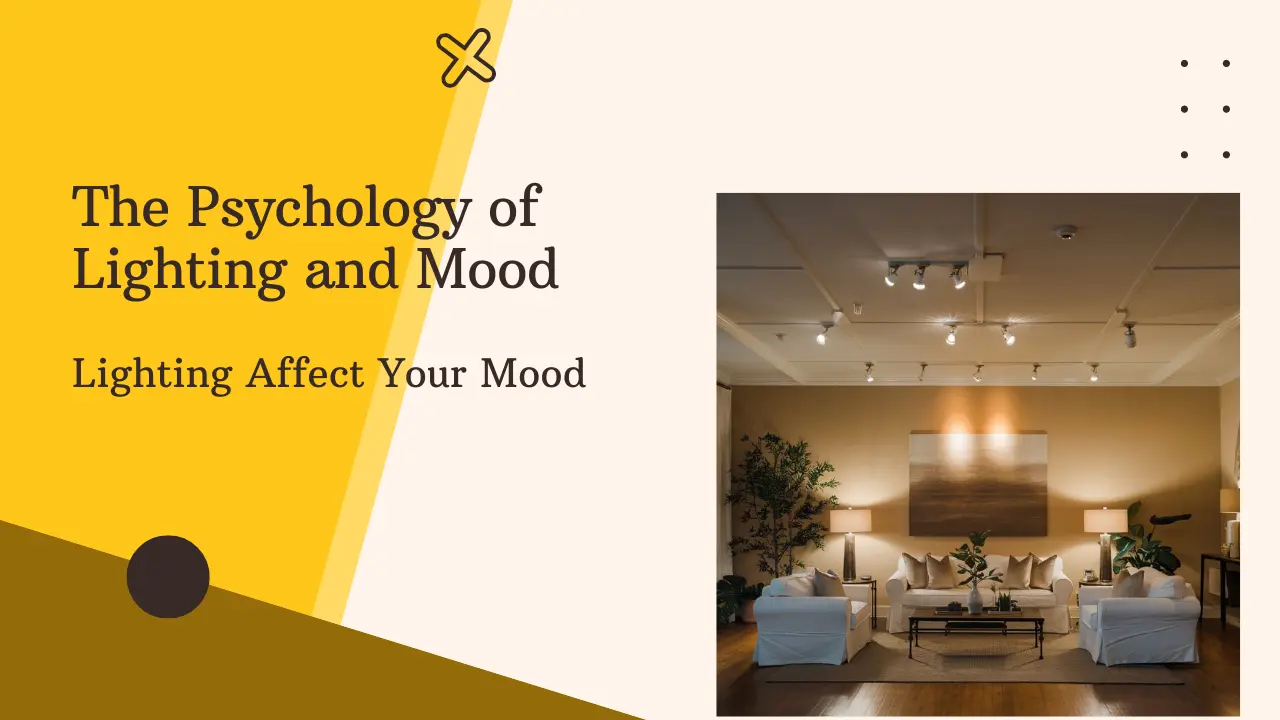The Psychology of Lighting and Mood: How Different Types of Lighting Affect Your Mood
Lighting and Mood play a pivotal role in our daily lives, affecting not only our environment but also our emotions and overall well-being. The psychology of lighting is a fascinating field that explores how various types of lighting influence our mood, productivity, and mental health. In this article, we’ll delve into the different types of lighting and their impact on mood and well-being.
The Influence of Natural Lighting on Mood
Natural Sunlight and Its Benefits
Natural sunlight has a profound impact on our mood and well-being. Exposure to sunlight increases the production of serotonin, a neurotransmitter associated with feelings of happiness and well-being. According to the National Institute of Mental Health, natural light can help alleviate symptoms of seasonal affective disorder (SAD) by boosting serotonin levels.
In addition to improving mood, natural sunlight also helps regulate our circadian rhythms, which are crucial for maintaining a healthy sleep-wake cycle. This synchronization can lead to better sleep quality and overall well-being.
The Role of Sunlight in Vitamin D Production
Another significant benefit of natural light is its role in vitamin D production. When sunlight hits our skin, it triggers the production of vitamin D, which is essential for bone health and immune system function. According to Mayo Clinic, adequate vitamin D levels can enhance mood and energy levels, contributing to a positive mental state.
Artificial Lighting and Its Psychological Impact
The Effects of Warm Lighting on Comfort
Warm lighting, characterized by a yellow or amber hue, creates a cozy and inviting atmosphere. This type of lighting can foster relaxation and comfort, making it ideal for spaces where you want to unwind. According to Harvard Health Publishing, warm lighting can help reduce stress and create a soothing environment, which is beneficial for mental health.
Cool Lighting and Increased Focus
On the other hand, cool lighting, which has a bluish tint, is often used in work environments to enhance concentration and productivity. This type of lighting mimics natural daylight and can help increase alertness and cognitive function. Research from Cornell University suggests that cool lighting can improve focus and performance in tasks requiring attention and detail.
The Impact of Lighting Color Temperature on Emotional State
How Color Temperature Affects Mood
Color temperature, measured in Kelvins (K), influences our emotional responses to lighting. Lower color temperatures (below 3000K) produce warm light, which is associated with comfort and relaxation. Conversely, higher color temperatures (above 5000K) produce cool light, which is linked to alertness and energy. Understanding the relationship between color temperature and mood can help you create spaces that align with your emotional needs.
The Psychological Effects of Different Lighting Colors
Different colors of lighting can evoke various emotional responses. For example, blue lighting is often associated with calm and tranquility, while red lighting can stimulate excitement and energy. According to Psychology Today, using colored lighting strategically can enhance the ambiance of a space and influence emotional states positively.
The Relationship Between Lighting and Productivity
The Role of Lighting in Work Environments
In work environments, lighting plays a crucial role in productivity and performance. Proper lighting can reduce eye strain and fatigue, improving overall job satisfaction. Bright, well-lit spaces are associated with increased energy levels and better concentration, leading to higher productivity. Research from University of Arizona highlights that adequate lighting conditions are essential for maintaining focus and efficiency in professional settings.
Adjusting Lighting for Different Tasks
Different tasks require different lighting conditions. For instance, task lighting, which focuses light on a specific area, is beneficial for activities that demand precision, such as reading or writing. Ambient lighting, which provides overall illumination, is suitable for general activities and creating a balanced environment. Adjusting lighting according to the task at hand can enhance comfort and performance.
The Psychological Benefits of Adjustable Lighting
Customizing Lighting to Suit Individual Needs
Adjustable lighting allows individuals to customize their lighting environment according to their preferences and needs. This flexibility can enhance mood and comfort by providing the right type of lighting for various activities and times of day. According to The American Society of Interior Designers, personalized lighting can improve overall well-being and satisfaction with one’s living space.
The Impact of Lighting Control on Well-being
Having control over lighting can also contribute to a sense of autonomy and control, which is beneficial for mental health. Being able to adjust the lighting to suit personal preferences can reduce stress and create a more harmonious living environment. Research from Journal of Environmental Psychology shows that lighting control positively affects well-being by promoting comfort and reducing environmental stressors.
Conclusion
In summary, lighting is more than just a functional element of our environment; it plays a significant role in shaping our mood and well-being. From the benefits of natural sunlight to the psychological effects of different types of artificial lighting, understanding how lighting influences our emotions can help us create spaces that support mental health and productivity. By selecting the right lighting for various activities and personal preferences, we can enhance our overall quality of life.







